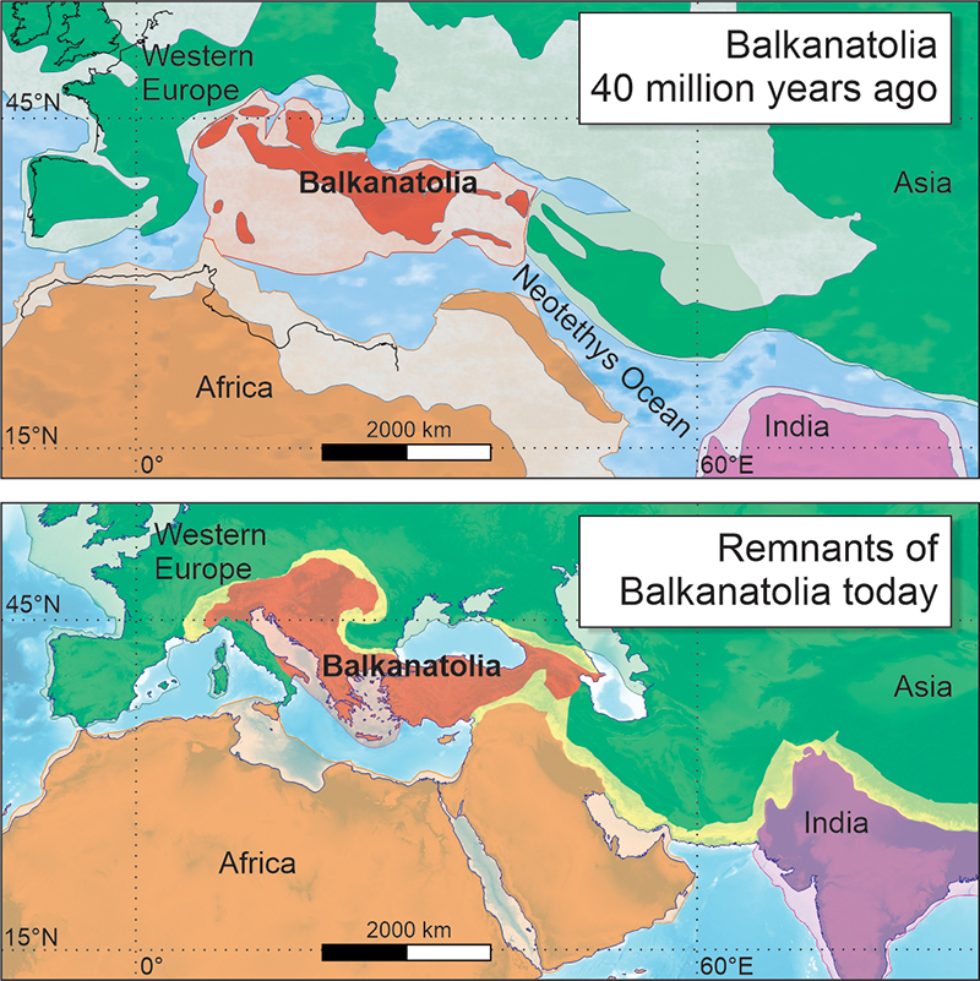
A low-lying continent existed between Asia, Africa and Europe 40 million years ago which has been dubbed by researchers as ‘Balkanatolia’. This continent, the researchers say, was home to exotic species and may have been the gate way through which mammals from Asia ventured into southern Europe.
As per the research published in Earth-Science Reviews, the forgotten continent transformed into a gateway or a land bridge from Asia to Europe and vice versa around 34 million years ago as sea levels dropped.
#Communiqué | Une équipe de géologues et paléontologues révèle l’existence de la Balkanatolie, qui était, il y a 50 millions d’années, un continent de basses terres séparé de l’Europe et de l’Asie.
https://t.co/7cg9xrCpH0 pic.twitter.com/cDChS1jWn9 — CNRS (@CNRS) February 22, 2022
From Continent to Gateway 34 million years ago
At the end of a era of time called Eocene epoch, mammals native to Western Europe vanished in huge numbers and were replaced by new Asian mammals. The sudden extinction event is called the Grande Coupure.
As per recent fossil discoveries in the Balkans region, “a 'peculiar' bioregion” may have been behind the colonisation of Asian mammals in southeastern Europe, which happened 5 to 10 million years before the Grande Coupure extinction event.

Pic Courtesy: CNRS
The researchers examined fossils from all known sites across the westernmost protrusion of Asia called Anatolia and Balkan peninsula of today. The team from French National Centre for Scientific Research found that the lost continent of ‘Balkanatolia’ worked as a gateway for movement between Asia and western Europe. The standalone continent gradually became a land bridge between the two larger continents.
The continent was an isolated archipelago 50 years ago, but got attached to Europe 40-34 million years ago due to factors like dropping sea levels, increasing Antarctic ice sheets and tectonic movements.
It should be noted that the review is based on a single team’s study of the records from fossil findings and the scope of understanding of geological changes that created the continent is still open.